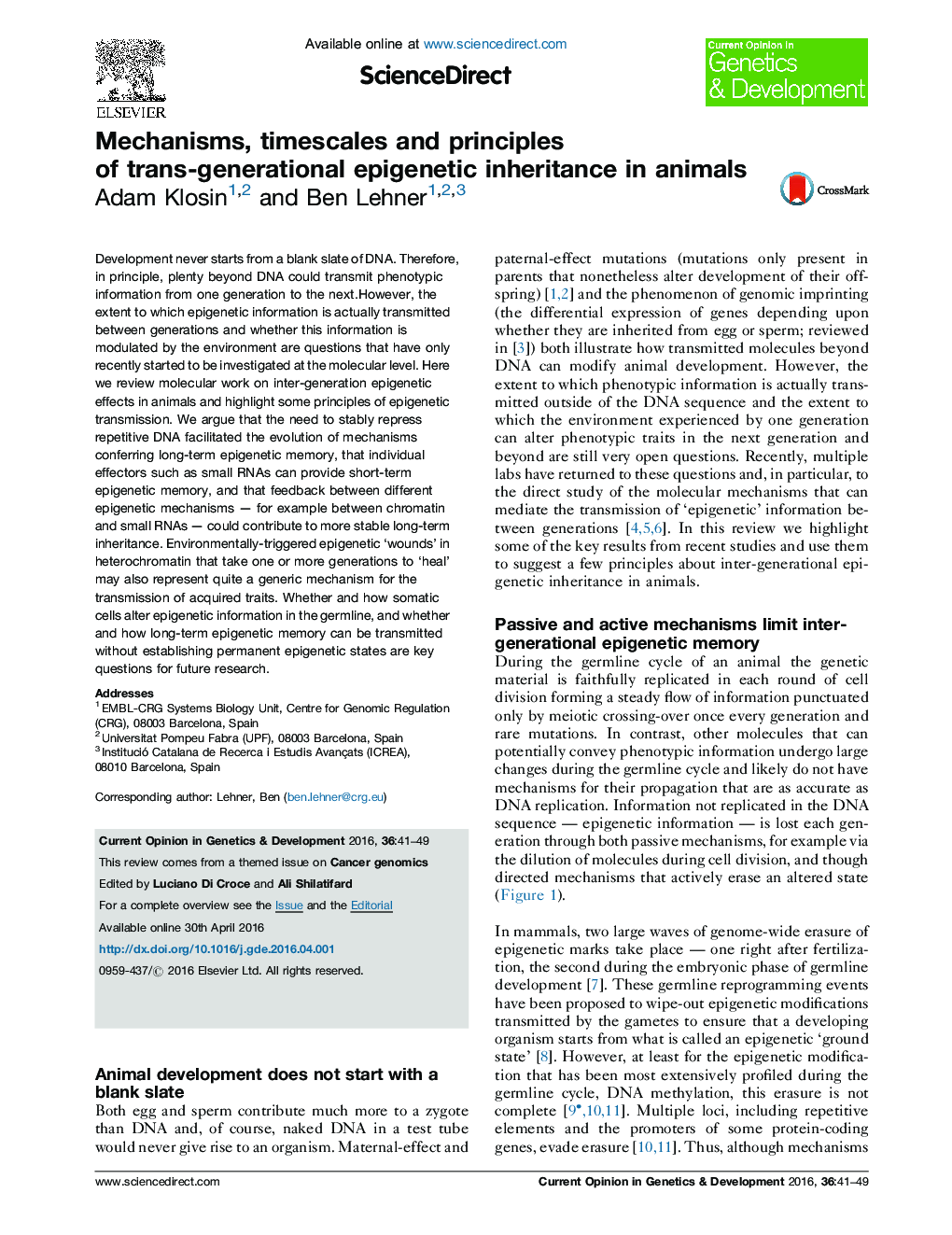| Article ID | Journal | Published Year | Pages | File Type |
|---|---|---|---|---|
| 2784818 | Current Opinion in Genetics & Development | 2016 | 9 Pages |
Development never starts from a blank slate of DNA. Therefore, in principle, plenty beyond DNA could transmit phenotypic information from one generation to the next.However, the extent to which epigenetic information is actually transmitted between generations and whether this information is modulated by the environment are questions that have only recently started to be investigated at the molecular level. Here we review molecular work on inter-generation epigenetic effects in animals and highlight some principles of epigenetic transmission. We argue that the need to stably repress repetitive DNA facilitated the evolution of mechanisms conferring long-term epigenetic memory, that individual effectors such as small RNAs can provide short-term epigenetic memory, and that feedback between different epigenetic mechanisms — for example between chromatin and small RNAs — could contribute to more stable long-term inheritance. Environmentally-triggered epigenetic ‘wounds’ in heterochromatin that take one or more generations to ‘heal’ may also represent quite a generic mechanism for the transmission of acquired traits. Whether and how somatic cells alter epigenetic information in the germline, and whether and how long-term epigenetic memory can be transmitted without establishing permanent epigenetic states are key questions for future research.
